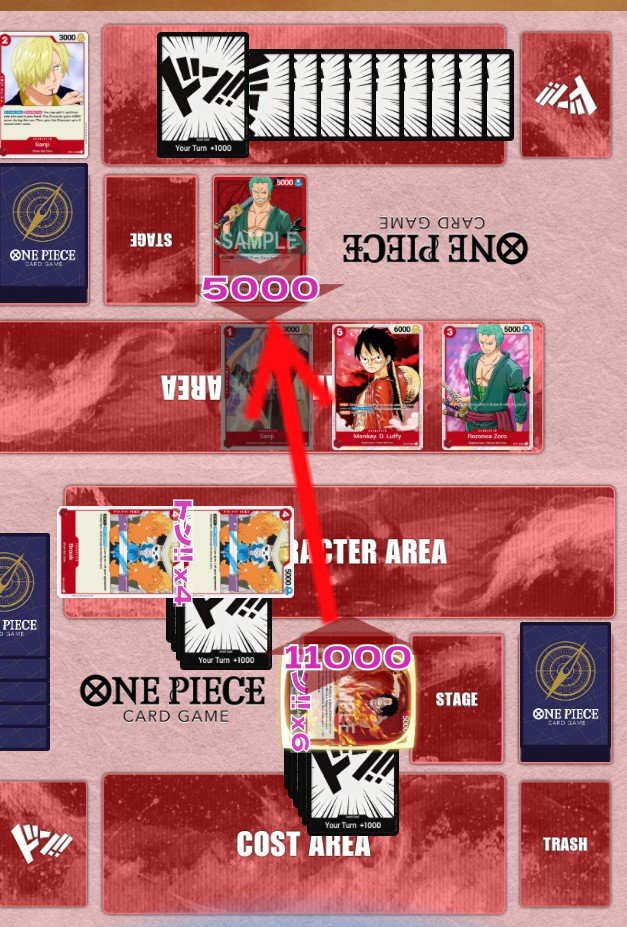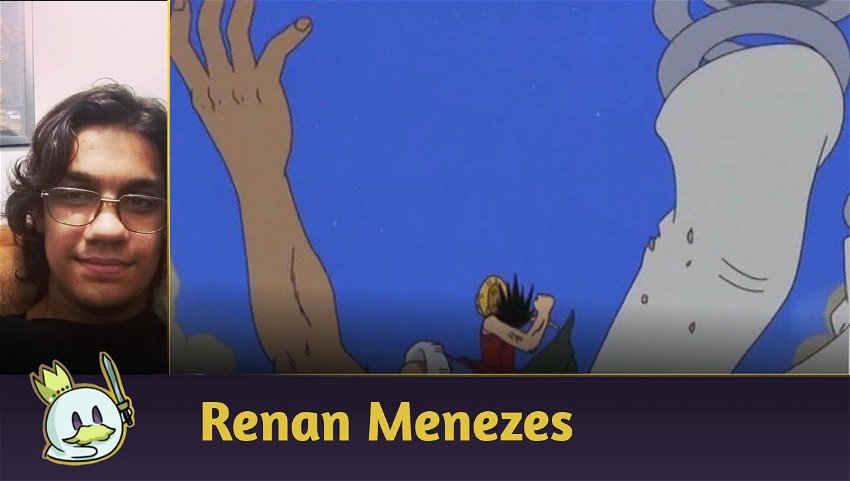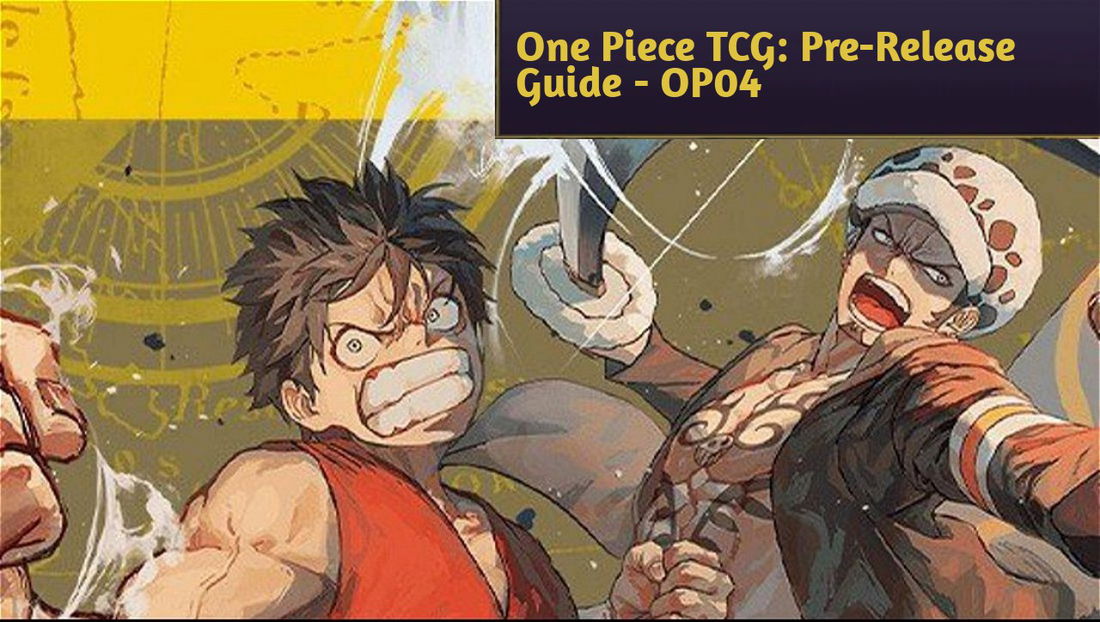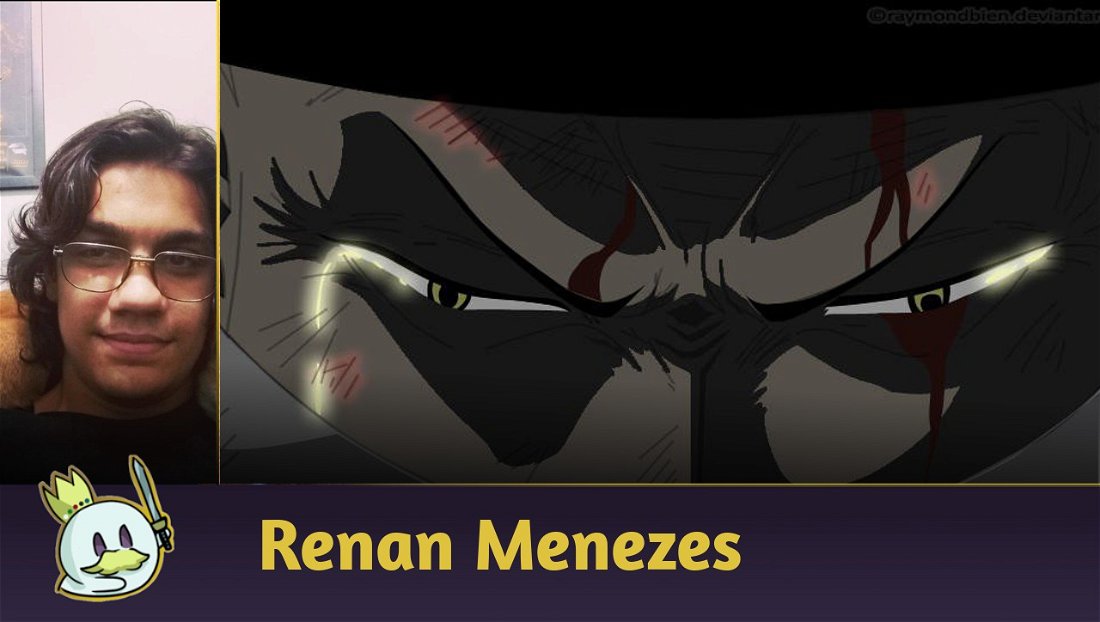Introduction - Guide: Everything About Lethal Attacks
Ever since One Piece TCG was released, I have been participating in several events. In them, I've seen people "misplay" when it's time to deal damage and finish the game.
Considering that, I decided to bring you a guide on how to finish matches as efficiently as possible, give you some tips, examples, and even offer a new way to think about late game damage in general!
Dealing Damage
Let's start with the basics. We have to understand how damage works and what is the best way to deal it to debate when's the best time to deal this damage.
How Does Damage Work
In One Piece TCG, damage works in the following way:
Attack - Blockers - Counter - Damage / K.O. - Trigger
The attack happens regardless of how much power was put into it; you can attack with a character with less power just to activate its "When Attacking" ability if you'd like to. Only then we'll have the block step and the Counter step, in which your opponent will be able to use events and "Counter" cards to defend themselves.
Then both sources of power are checked, and, if the attacker's power is the same or bigger than that character's, or leader, the damage is dealt. If it's a character, it will be knocked out, and if it has an "On K.O." ability, it will be activated. If it's a leader, they'll draw a Life card, and if that card has a "Trigger" effect, the defending player will be able to activate it.
Important: Trigger is only activated if damage is dealt. Other effects which get Life cards don't activate Trigger effects!
Examples:

It is important we highlight, as well, the Double Attack ability and its ruling, because I can see there are many questions regarding this ability.
A character with Double Attack, if they attack successfully, deals two damage. That means they will get two Life cards.
Notice: the character with Double Attack doesn't attack twice. So, if it has a "When Attacking" effect, it will only be activated once. If your opponent gets a Life card with a "Trigger" effect that knocks out the character or reduces the attacking character's power, they'll still lose the other Life point, because that damage already happened. A successful attack deals 1 damage, and a Double Attack deals 2.
Examples:

2.000+
This might be the most basic principle in the game, but let's revisit it to make sure we know all our fundamentals.
So far, character cards are the only ones that have a "Counter" effect, which means, they can be discarded at the "Counter step" to increase the leader's power. Besides them, we also have event cards, but we'll discuss them later. So far, until OP05, we haven't seen a card that has a "Counter" effect bigger than 2.000, so, if we want our attack to be as efficient as possible, we should always attack with at least 2.000 power more than our target's power. Like so, we'll guarantee that, if our opponent wants to defend themselves with a "Counter" card, they should use two cards to do so.
Examples:

Events
Events are the most efficient ways to defend yourself against an attack, because besides the fact they increase the power of the target we want to defend tremendously, they can also interact with other characters on board, which can give us advantages or even frustrate our opponent's future attacks. Always observe your opponent's active "DON!!".
There are too many events and effects to mention them all, so let's just use a basic value that is very common in numerous decks: For each 2 of your opponent's active DON!!, add +4.000 to your attack.
But be careful! There are also cards that cost 1 DON!! which also give out +4.000, so observe your opponent's discard pile constantly!
Examples:

Blockers
Blockers are almost as efficient as events, however, the difference between them is that you'll expect a blocker. That makes them easy to play around, but it doesn't make them any less complicated to overcome.
Depending on the game state, you should put pressure on the blocker, be it with many small attacks or a singular big attack. Removals and "Rest" tools are also welcome when it's time to deal with a blocker, so make sure to always keep some of these tools for the game's final turns.
Examples:

Ending the Game
Let's see a few of the best ways you can end a game.
Example 1

We can see in the image above that the opponent doesn't have any available DON!!, no blockers and just 1 Life. In this case, we should pay attention only to the number of cards in their hand; let's suppose they have 2.
Let's go through a mental shortcut and consider each card in their hand is a "Counter 2.000" card. This way, we'll use two more DON!! for each card in our opponent's hand. In this example, the best way to end the game would be to place 4 DON!! on the character and hit it.
We attack with the character first in case any "Trigger" effect makes our attack worse, and then, if they don't have any Trigger effects in their Life pile, they'll have 3 cards in hand. Through the shortcut we defined previously, we attach the 6 leftover DON!! on our leader and guarantee that the damage will be enough for them to not have enough cards to block the final blow.
Example 2

Here, we have a more complex situation, but with a little bit of brain power, we can see it isn't that hard.
Let's suppose our opponent has Radical Beam!! OP01-029 in hand and another "Counter 2.000" card; we have 2 characters on board with 5.000 power. The situation is easier than it looks.
First, we'll attack with 5.000 power, and the opponent will block with their "Counter 2.000" card.
The second attack should be a 9.000 power attack, reducing our opponent's Life points to 0.
The leader should now attack with 11.000, guaranteeing the final blow.
The result:

Another line of play would be even easier for us, look:
We attacked with 5.000 and the opponent took the damage, this way, having in their hand Radical Beam!! OP01-029 and two other "Counter 2.000" cards. Notice the power we need in the end is even smaller.
The second attack should be a 9.000 power attack, being blocked by Radical Beam and another "Counter 2.000" card.
The leader should only need to attack with 7.000 power in this situation to finish the game.
Tips
By following the reasoning we presented before, I believe you'll be able to think your attacks through better when it's time to end the game. However, I still have a few tips that can be very useful to you when it's time to attack!
Be Unpredictable
Against red decks, we tend to attach our "DON!!" before we even attack to prevent getting hit with K.O. effects that might come from Trigger effects. However, this move can make our intentions clear and let our opponent know exactly how they should defend themselves against our attacks. Remember you can't detach a "DON!!" from a character once you attached it.
Save your Big Threats to End the Game
Let's use Monkey.D.Luffy ST01-012 as an example, or, as he is known in the community, "Rush Luffy". This card is excellent to finish games, because of its ability.
Cards like this one tend to impact the mid-game very little, as they'll be the opponent's primary target and can make you lose the element of surprise for that final blow. Try to use these cards as efficiently as possible, and not only to build your board!
Be Careful When Dealing Damage
It might seem contradictory to what this article is saying, but dealing damage isn't always a good idea. Remember that any time you deal damage, your opponent will get a card and one of your creatures will be tapped. So, sometimes it is a good idea to get your opponent to their final Life points and then build a board that is more consistent. Like so, on the next turn you can be more aggressive at the same time you'll prevent your opponent from getting an extra card on their turn, limiting their options.
Keep an Eye On Your Opponent!
Many times we hesitate when we leave our characters tapped, at the mercy of our opponent, but remember they'll be vulnerable too. Always try to maintain a good presence on board, be it with your characters or by simply removing your opponent's characters. Try to keep in mind their possible attacks and how you'll block them, or, in some cases, which of the attacks you'll tank head on!
Don't Be Afraid of Ending Games
In most One Piece TCG matches, the match ends with the famous sentence: "If I had survived just one more turn, I'd have won!". That happens because matches are always well-balanced, considering the game's nature of giving you an extra card when you lose Life points. So, don't be afraid of ending games.
Observe your opponent's discard pile, try to decipher how many "Counter" cards they may have in hand, how many "Counter" cards they may be saving, and, finally, don't be scared of setting up big attacks that will be trying to deal the very last blow.
Be Familiar with Other Decks
Obviously, we won't be able to predict our opponent's next card. Each player builds their deck a certain way, but each deck has a set of cards that make up its shell. Being familiar with these cards allows us to play around them, predict our opponent's plays better, and, this way, complementing the previous tip, it will give us a better view of what's expected when you're trying to end the game.
Final Words
Your game experience will always speak louder in situations in which you'll have to finish the game, so, use this guide as a base and apply it to your deck's strategy. After all, each strategy works in a certain way, there may be hundreds of variations to the examples we've given, and new cards that entirely change how we think about damage and attacks can be released in the future.
But, until then, I believe this article will help you understand and read the game better and evolve your damage skills in One Piece TCG.
What about you? Do you have an example we could discuss and improve our game skills together? Leave it in the comment section! See you next time!














— Comments 0
, Reactions 1
Be the first to comment